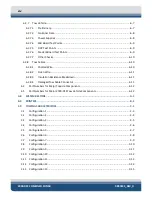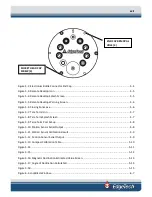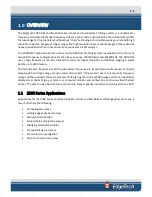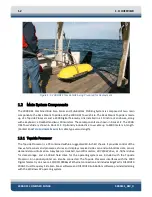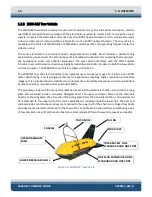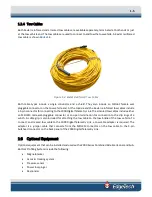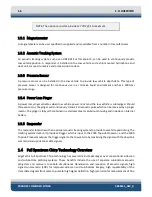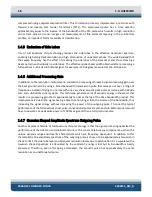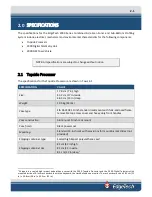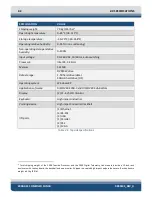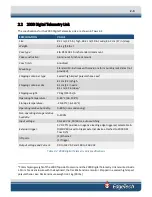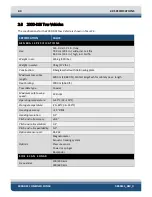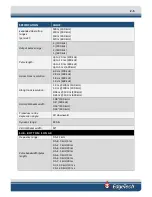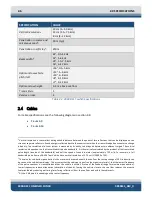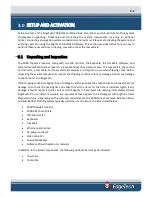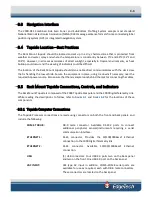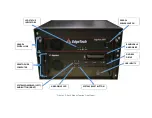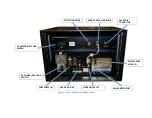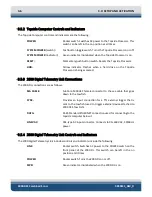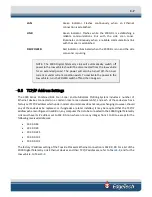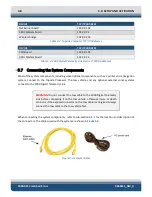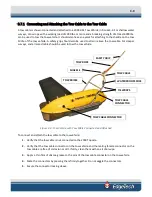
1-8
2000-DSS COMBINED SONAR
0009335_REV_D
compressed using a digital compression filter. This correlation process is implemented in real time with
forward and inverse Fast Fourier Transforms (FFTs). The compressed pulse has a time duration
approximately equal to the inverse of the bandwidth of the FM pulse which results in high resolution
across track side scan sonar images and measurements of fine sediment layering in the sub-bottom
profiles, an important factor for sediment classification.
1.4.5
Reduction of Side Lobes
Use of Full Spectrum chirp technology reduces the side lobes in the effective transducer aperture,
enabling high along track resolution and high attenuation of unwanted echoes. The wide bandwidth of
the sweep frequency has the effect of smearing the side lobes of the transducer and thus achieving a
beam pattern with virtually no side lobes. The effective spatial beam width obtained after processing a
full spectrum 2–10 kHz sub bottom signal, for example is 20 degrees measured at the -3db points.
1.4.6
Additional Processing Gain
In addition to the resolution improvement, correlation processing achieves a signal processing gain over
the background noise by using a broad bandwidth transmission pulse that sweeps out over a range of
frequencies instead of trying to operate with one very sharp acoustic peak pulse as is done with CW side
scan and sub-bottom sonar systems. This technique generates a lot of acoustic energy in the water that
results in a processing gain that is approximately ten times the log of the time bandwidth product. This
improvement is due to the signal having a time duration longer than the inverse of the bandwidth, thus
increasing the signal energy without increasing the power of the outgoing pulse. To equal the typical
performance of the full spectrum sonar pulse, conventional pulse side scan and sub-bottom sonars would
have to operate at a peak pulse power of 100 times greater than a full spectrum pulse.
1.4.7
Gaussian Shaped Amplitude Spectrum Outgoing Pulse
Another important feature of Full Spectrum Chirp technology is that the signal processing optimizes the
performance of the side scan and sub-bottom sonars. The sonar contains many components, each with a
unique dynamic range and linearity characteristic which are frequency dependent. In addition to this
characteristic, the amplitude spectrum of the outgoing pulse is chosen to be approximately Gaussian in
shape to limit the side lobe level and temporal resolution losses due to attenuation. As a wavelet with a
Gaussian shaped spectrum is attenuated by the sediment, energy is lost but its bandwidth is nearly
preserved. Therefore, even after being attenuated, the acoustic pulse has approximately the same
resolution as an unattenuated pulse.
Summary of Contents for 2000-DSS
Page 20: ......
Page 56: ...Figure 4 2 2000 Digital Telemetry Link Electronics Block Diagram...
Page 57: ...Figure 4 3 2000 Digital Telemetry Link Wiring Diagram...
Page 59: ...Figure 4 4 Tow Vehicle Electronic Block Diagram...
Page 60: ...Figure 4 5 Tow Vehicle Interconnect Drawing...
Page 63: ...Figure 4 6 Armored Cable PMI Grip Unterminated Topside...
Page 64: ...Figure 4 7 Test Cable...
Page 77: ...5 13 Figure 5 16 Magnetic Declination Estimated Value Screen...
Page 79: ...5 15 getDeclination CR Figure 5 18...
Page 80: ......
Page 94: ......
Page 96: ......
Page 98: ......

